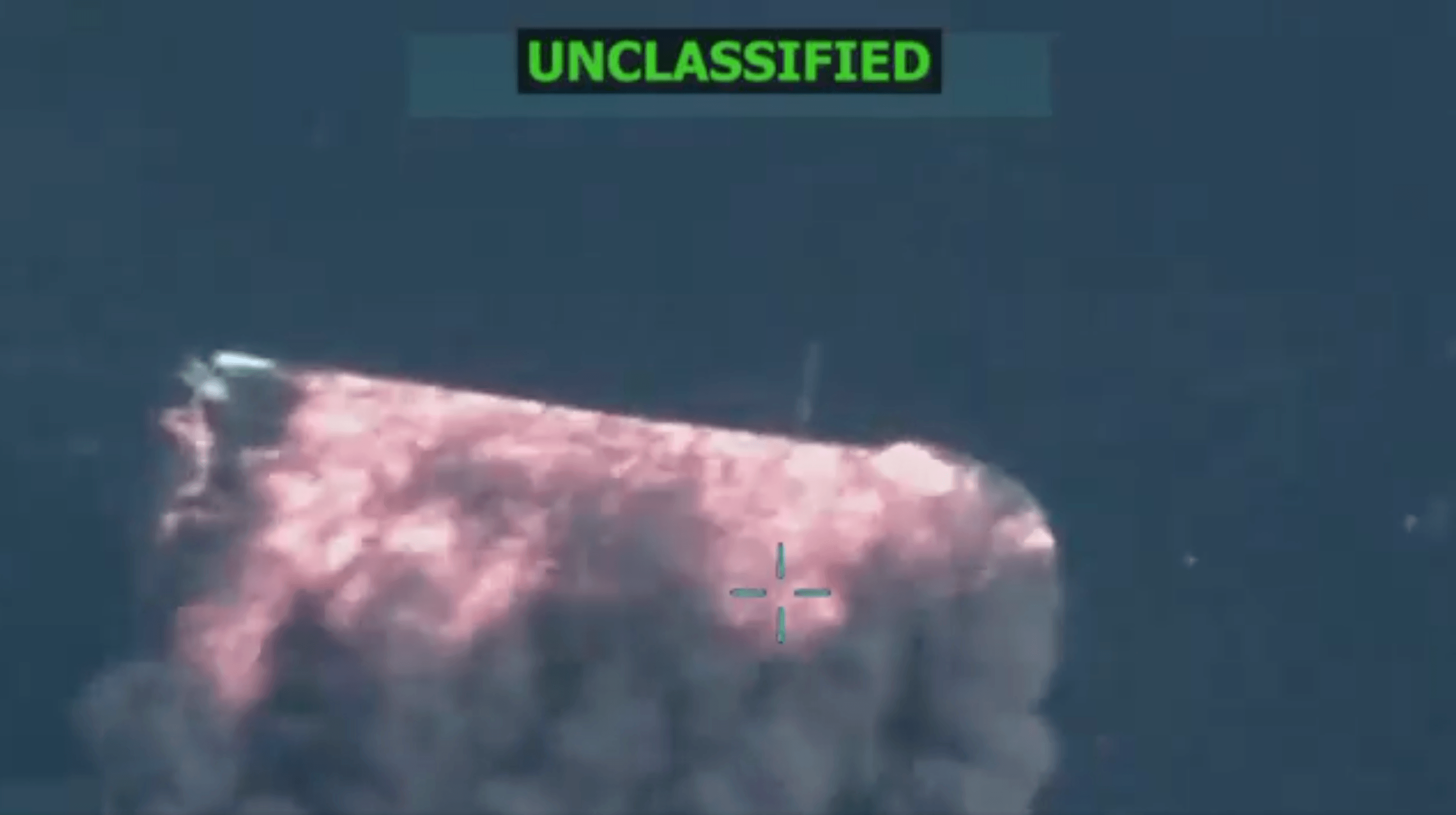Does Customs and Border Protection Have the Legal Authority to Seize Merchandise Made With Forced Uyghur Labor?
Customs and Border Protection and the Department of Homeland Security are asserting that CBP will seize goods in order to enforce the 2021 Uyghur Forced Labor Prevention Act, though it does not appear to have the authority to do so.

Published by The Lawfare Institute
in Cooperation With

Does U.S. Customs and Border Protection (CBP) have the legal authority to seize imported goods that were made with forced Uyghur labor?
Both CBP and the U.S. Department of Homeland Security (DHS) have asserted that CBP will use seizure and forfeiture as tools for enforcing the Uyghur Forced Labor Prevention Act (UFLPA), a trade law enacted in 2021 to ban the importation of goods made wholly or in part in China with forced Uyghur labor. On careful review, the assertion does not hold up. U.S. customs law does not provide CBP any clear legal basis for seizing and forfeiting imported goods made with forced Uyghur labor.
The absence of seizure authority does not mean that importing goods made with forced Uyghur labor is a risk-free proposition. A company that attempts to import such goods might be subject to civil penalties imposed by CBP, or could even face the prospect of criminal liability, depending on the circumstances of importation. But when it comes to the goods themselves, CBP’s enforcement authority is limited to detaining and then excluding such goods from the customs territory of the United States. Seizure and forfeiture are unavailable.
The assertion of seizure authority where it does not exist is a substantial error, and one that carries meaningful implications for any importer trying to navigate the minefield of UFLPA enforcement. Moreover, from a policy standpoint, it is yet another indication that a marquis piece of U.S. human rights legislation remains inexplicably out-of-step with the rules-based trading order.
There are many reasons why Congress might want to establish seizure and forfeiture as tools for CBP to use in UFLPA enforcement. Nevertheless, Congress must recognize that both the UFLPA and the forced labor import ban on which it is built, Section 307 of the Tariff Act of 1930, continue to suffer from fundamental deficiencies that only a more thoughtful legislative structure can cure. Establishing seizure authority without first remediating those deficiencies would compound the inadequacies of the law. In the immediate term, CBP and DHS should update their published documentation on the UFLPA to acknowledge the absence of statutory authorization for seizure.
Through this article, I will provide a brief tutorial on the closely related concepts of detention, exclusion, seizure, and forfeiture, as used in the context of import trade; explain the legal basis that CBP and DHS have cited in claiming that CBP may seize goods imported in violation of the UFLPA; analyze whether the claimed authority applies to goods made with forced Uyghur labor; and discuss the ramifications of this development for importers and policymakers, given what is known about other shortcomings in the UFLPA through the initial months of enforcement.
Distinguishing Between Detention, Exclusion, Seizure, and Forfeiture
In order to understand the breadth (and limitations) of CBP’s border enforcement authority for the UFLPA, it is necessary to have a grasp of the closely related concepts of detention, exclusion, seizure, and forfeiture.
When CBP stops an import shipment at the border, this is often colloquially referred to as a seizure, though it is not. Technically, it is a detention. By statute (19 U.S.C. § 1499(c)(1)-(2)), except in the case of merchandise where another government agency has the right to make an admissibility determination—for example, the Food and Drug Administration (FDA), or the Environmental Protection Agency (EPA)—CBP only has five days from the date that an importer presents merchandise for importation to decide whether or not to detain such merchandise.
According to 19 U.S.C. § 1499(c)(5)(A), if CBP decides to detain merchandise, that triggers a concurrent clock, ticking toward a deadline 30 days after the presentation of the merchandise, by which CBP must decide whether or not to exclude the merchandise—that is, to prevent such merchandise from entering the customs territory of the United States. On the 30th day, if CBP has not affirmatively decided whether to admit or exclude the merchandise, it is “deemed excluded” by operation of law, and other remedies become available to the importer. (Namely, the importer may file an administrative protest for an expedited 30-day decision, followed thereafter by a right of immediate judicial review before the U.S. Court of International Trade.)
Seizure is the act by which a government official takes physical possession of an item (such as imported merchandise) for certain violations of customs and related laws. Seizure is primarily authorized as a necessary precursor to forfeiture, which is the process by which the government will take ownership of merchandise previously owned by a private party. 19 U.S.C. § 1592(c)(14) also authorizes seizure in certain instances if needed to secure the payment of a monetary penalty assessed by CBP.
19 U.S.C. § 1499(c)(4), the statute governing detention and exclusion by CBP, specifies that “[i]f otherwise provided by law, detained merchandise may be seized and forfeited” (emphasis added). Therein lies an important implication: CBP’s seizure authority is not inherent. In all instances, the authority to seize must be provided by law.
The UFLPA does not expressly provide for seizure and forfeiture of offending merchandise, nor does Section 307. Ergo, if U.S. customs laws authorize the seizure of goods made with forced Uyghur labor, such authorization must be found elsewhere than the text of the UFLPA or Section 307.
The Claim of UFLPA Seizure Authority by CBP and DHS
The UFLPA was enacted in December 2021 with a 6-month delay in effect. That delay was created to allow for the development of a “strategy” to guide enforcement, as well as the publication of “guidance” for importers faced with navigating enforcement. Accordingly, in the run-up to enforcement on June 21, two key documents were published.
Acting on behalf of the Forced Labor Enforcement Task Force, DHS published a Strategy to Prevent the Importation of Goods Mined, Produced, or Manufactured With Forced Labor in the People’s Republic of China (DHS UFLPA Strategy). Concurrently, CBP published its own UFLPA Operational Guidance for Importers (CBP Importer Guidance).
The DHS UFLPA Strategy and the CBP Importer Guidance are extensive documents, covering a range of topics, many of which are mandated by the UFLPA. Both documents assert that CBP will be enforcing the UFLPA through a combination of detention, exclusion, and seizure.
The DHS UFLPA Strategy asserts that “[g]oods that do not qualify for an exception [to the UFLPA] are subject to exclusion, or seizure and forfeiture.” In providing a description of how CBP will use existing legal authorities to ensure that goods made with forced labor will not be imported, the DHS UFLPA Strategy asserts that “existing authorities include, but are not limited to, detention and exclusion authorities under 19 U.S.C. § 1499 and seizure authorities under 19 U.S.C. § 1595a(c).” Similarly, the CBP Importer Guidance asserts that “[i]mportations determined to be in violation of the UFLPA may be subject to seizure and forfeiture,” citing 19 U.S.C. § 1595a as the legal justification for such seizure.
The Claimed Seizure Authority Does Not Apply to UFLPA Violations
The statute cited by DHS and CBP to justify UFLPA seizures, 19 U.S.C. § 1595a, is the primary statute authorizing CBP to seize certain types of goods as a precursor to forfeiture. Specifically, subsection (c)—which is cited in the DHS UFLPA Strategy—authorizes seizure and forfeiture for the attempted importation of certain merchandise contrary to law.
For certain defined categories of merchandise, identified in § 1595a(c)(1), CBP is required to initiate seizure and forfeiture proceedings. For other categories of merchandise, identified in § 1595a(c)(2), CBP is permitted to initiate seizure and forfeiture. Neither provision applies to a category of merchandise that might encompass goods made with forced labor generally, or forced Uyghur labor specifically.
Under subsection (c)(1), seizure and forfeiture is required when CBP finds merchandise being introduced into the U.S. that is stolen or smuggled; is a controlled substance; is a specifically defined variety of contraband article (including narcotics, unauthorized firearms, counterfeit coins, unauthorized recordings of live musical performances, and illicit phonorecords); or is a plastic explosive. That is a complete list. Conspicuously absent from this list is any requirement for CBP to seize and forfeit goods made with forced labor.
Similarly, subsection (c)(2) permits CBP to seize and forfeit another specific list of imported goods: goods that are not compliant with restrictions or prohibitions imposed for health, safety, or conservation reasons (for example, FDA regulations, EPA regulations, Federal Motor Vehicle Safety Standards); goods requiring a license or permit and not accompanied by the same; goods involved in a few types of copyright, trademark, or trade dress violations; and goods marked with an incorrect country of origin. Once again, none of the listed categories of goods would include goods made with forced labor.
Although the DHS UFLPA Strategy specifically (and erroneously) cited subsection (c) as providing the authorization to seize imported goods made with forced Uyghur labor, it bears mentioning that the remaining provisions within 19 U.S.C. § 1595a are similarly inapplicable.
For example, subsection (a) authorizes CBP to seize and forfeit anything used to facilitate the importation of any article contrary to law, though not the article itself. This includes vessels, vehicles, aircraft, or, literally, any other “thing” used to bring in, unload, remove, conceal, harbor, or subsequently transport any such article. Conceivably, this could be used to justify the seizure and forfeiture of a wide range of items used to import goods made with forced Uyghur labor (for example, containers, packaging materials, or even vessels or airplanes), but not the goods themselves. (For context, this is the statute relied upon to seize and forfeit aircraft found to have smuggled narcotics into the United States. The narcotics themselves are covered by one of the specific seizure authorizations in 1595a(c)(1).)
In claiming that 19 U.S.C. § 1595a authorizes the seizure of imported goods made with forced Uyghur labor, DHS and CBP are acting as if the statute contains a general authorization of seizure authority for any attempted importation of merchandise “contrary to law.” For a brief period of time, between 1986 and 1993, this statute did contain such a general seizure authorization: “[A]ny merchandise that is introduced or attempted to be introduced into the United States contrary to law ... may be seized and forfeited.” With the enactment of the North American Free Trade Agreement Implementation Act in 1993, however, Congress replaced that short-lived general authorization of seizure authority with the current structure, which either requires or permits seizure only of specifically defined categories of merchandise, not including goods produced wholly or in part with forced labor.
Thus, contrary to the assertions in the DHS UFLPA Strategy and the CBP Importer Guidance, there is no provision in 19 U.S.C. § 1595a that would either require or permit CBP to seize and forfeit goods imported in violation of the UFLPA.
Ramifications for Importers and Recommendations for Policymakers
The misstatement of UFLPA seizure authority is not merely a technical error by DHS and CBP officials working to produce mandated guidance on a short timetable. Simply by asserting that it possesses this authority, CBP is far more likely to attempt to effectuate a seizure of merchandise for UFLPA violations, even though such a move is unauthorized under current law. Doing so would put importers in an untenable position.
Jurisdiction to consider a challenge to customs seizure or forfeiture lies in federal district court (28 U.S.C. §§ 1355, 1356). Jurisdiction to challenge an exclusion, including a deemed exclusion, is the exclusive purview of the U.S. Court of International Trade (USCIT), in accordance with 28 U.S.C. § 1581(a); 19 U.S.C. § 1514a; and 19 U.S.C. § 1499(c)(5). Importers may have good reason to prefer review of an exclusion or deemed exclusion in the USCIT, given that court’s specialized expertise in resolving the unique factual and legal questions presented by CBP’s enforcement of trade laws. And to be clear, UFLPA enforcement has dredged up myriad such questions clamoring for judicial review, specifically around the issues of when a detention under the UFLPA is warranted and how an importer may demonstrate that detained merchandise is not within the scope of the UFLPA.
But by issuing a seizure notice, even one that is ultra vires and arguably void ab initio, CBP can increase exponentially the cost and complexity of obtaining judicial review in any court by creating considerable uncertainty around which court has subject matter jurisdiction to resolve the dispute.
This is especially concerning given the vast gulf that exists between what CBP thinks it is doing in enforcing the UFLPA and what the importing public thinks of the same. DHS officials view this law as “the next Foreign Corrupt Practices Act,” and CBP is heralding the unprecedented success of having targeted nearly a half-billion dollars of imports since UFLPA enforcement launched in June. But as I have written elsewhere, it is difficult to conclude that the law is working as intended, given that not one importer facing enforcement has followed the path for demonstrating compliance prescribed by the UFLPA. And faced with the exceptionally challenging task of identifying import trade linked to the Xinjiang province or tainted with forced Uyghur labor, CBP is asserting a fundamentally implausible 100 percent rate of success.
Because U.S. customs law currently does not authorize CBP to seize and forfeit merchandise for UFLPA violations, DHS and CBP should revise the DHS UFLPA Strategy and CBP Importer Guidance in recognition of the same, to make clear that CBP will not pursue unlawful seizures for UFLPA enforcement purposes absent statutory authorization.
While Congress could easily step in to fix the gap, it should take hold of the opportunity afforded by the need to address this issue, to cure the underlying legal deficiencies of forced labor trade enforcement in the United States. The UFLPA and Section 307 are technical laws that require a technocratic structure of support.
For generations, the U.S. has been known on the world stage for its commitment to both human rights and the rules-based international order. It is therefore perhaps the height of irony that the UFLPA, arguably one of the most consequential individual pieces of human rights legislation ever enacted by the U.S., suffers from so many material gaps that are causing the law to be enforced without the benefit of governing rules.
Congress should take seriously the challenge of building the supporting legal infrastructure so that the U.S. forced labor import ban (Section 307) and the UFLPA can become a rules-based success.





